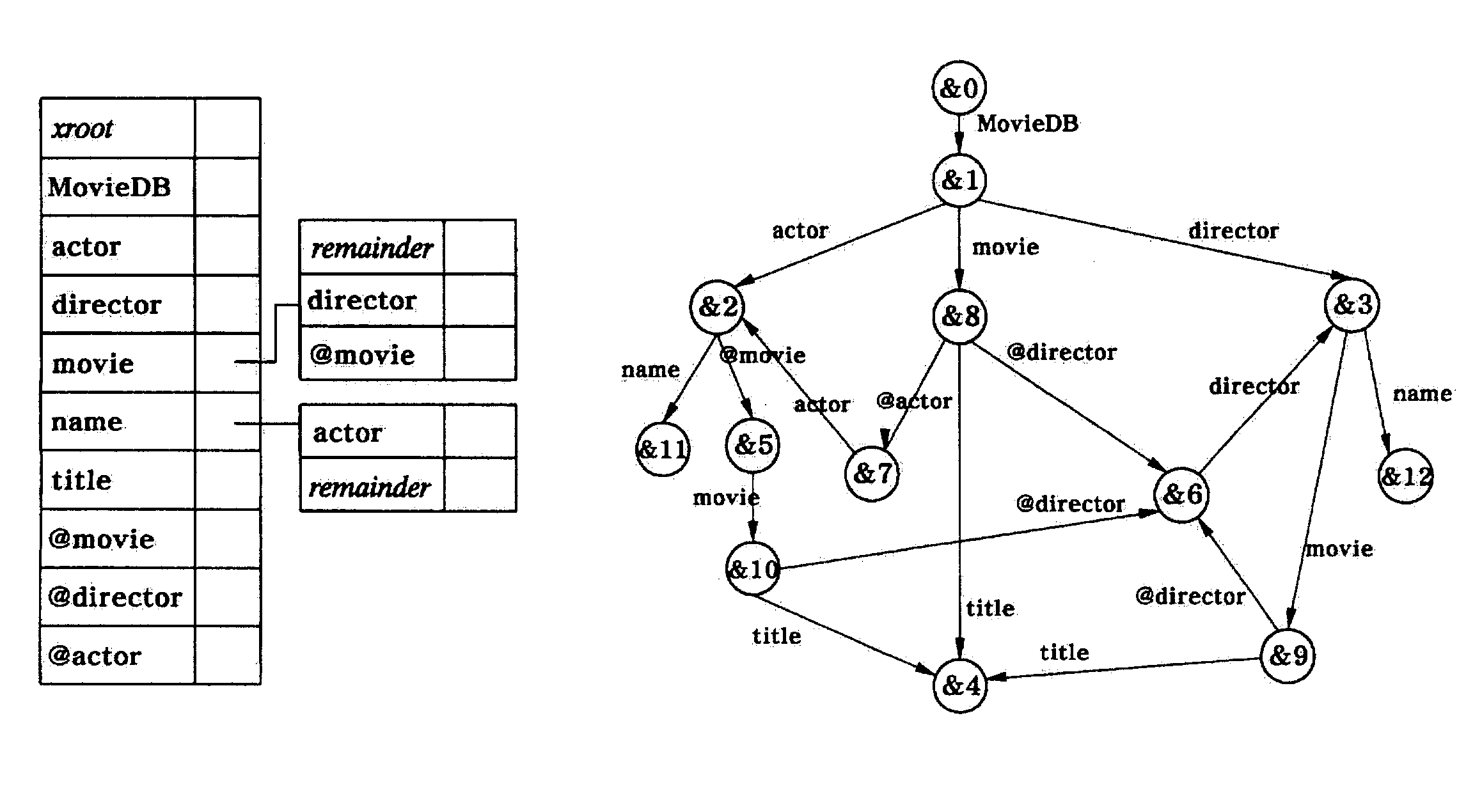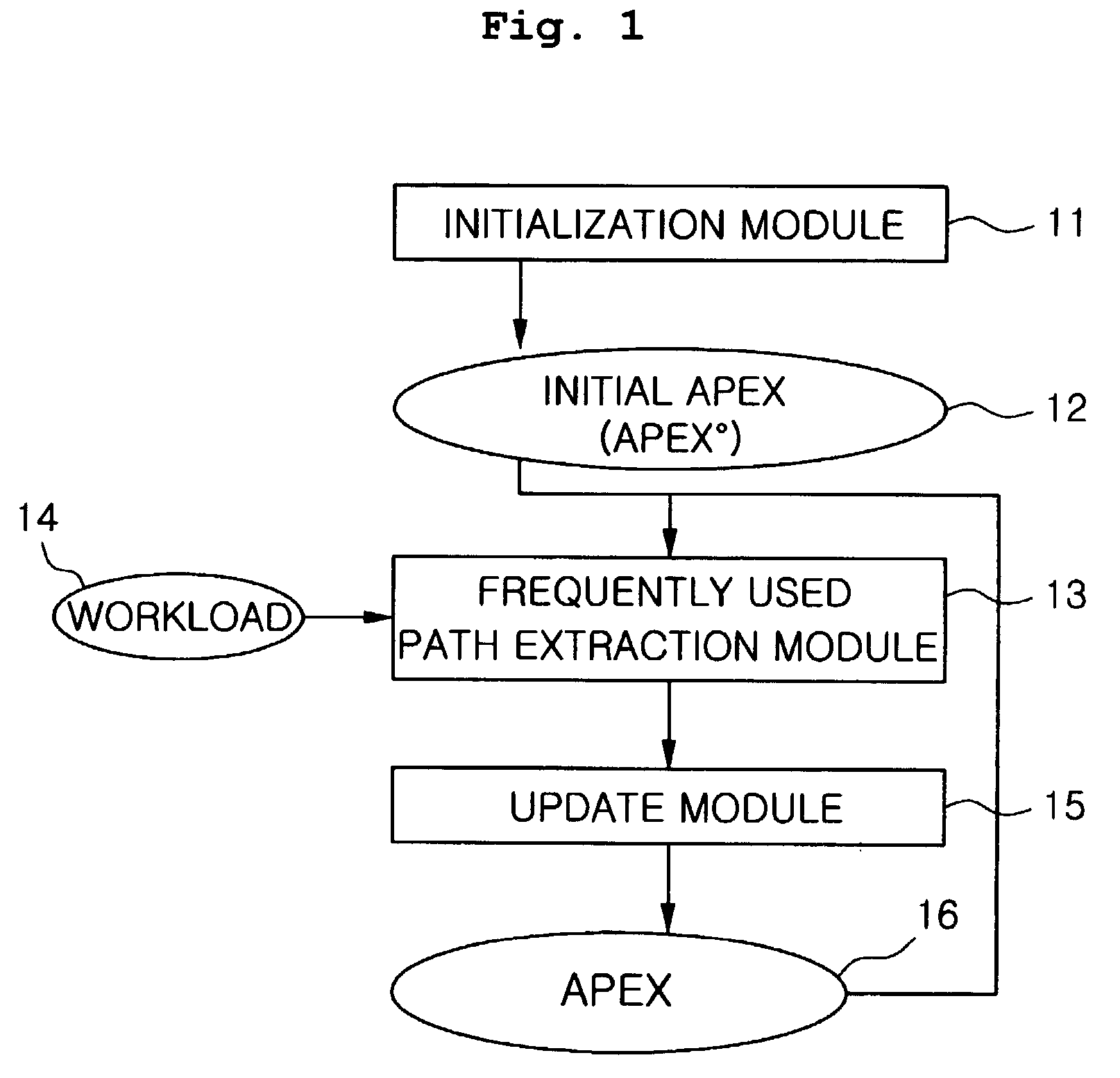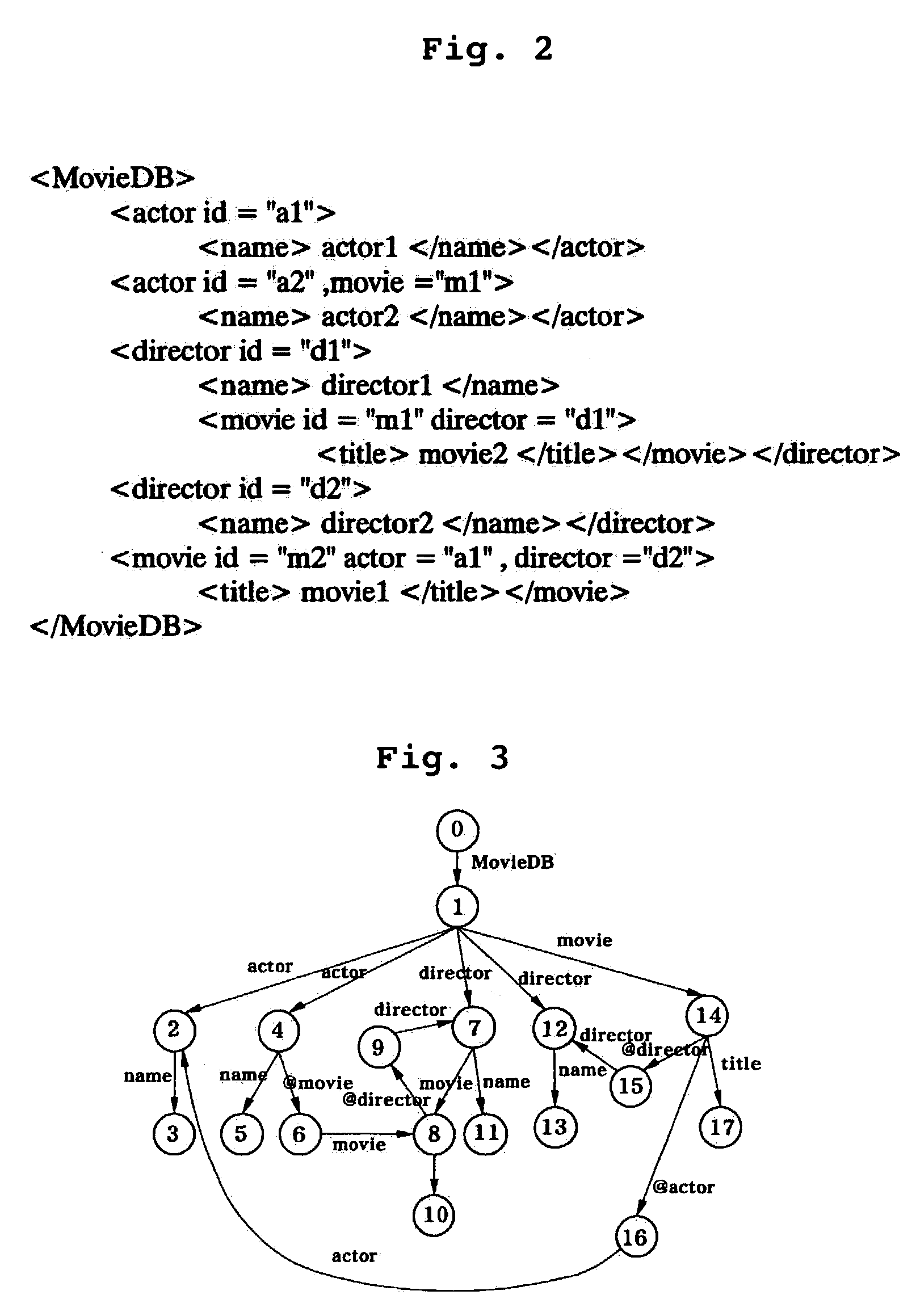Method of processing query about XML data using APEX
a technology of xml data and apex, applied in the field of index structure, can solve the problems of significant degradation, large size of strong dataguide than that of original xml data, and inability to maintain parent-child relationship among elements, so as to reduce the overhead of creating
- Summary
- Abstract
- Description
- Claims
- Application Information
AI Technical Summary
Benefits of technology
Problems solved by technology
Method used
Image
Examples
Embodiment Construction
[0035]Reference now should be made to the drawings, in which the same reference numerals are used throughout the different drawings to designate the same or similar components.
[0036]FIG. 1 is a view showing a structure for managing an APEX according to the present invention. As shown in FIG. 1, an APEX management module chiefly includes three modules, including an initialization module 11, a frequently used path extraction module 13 and an update module 15. The initialization module 11 is a module that is used to initially create an APEX without query workloads only when APEX is built first. That is, this initialization module 11 creates an initial APEX APEX0 12 that is the initial form of the APEX. The initial APEX APEX0 is a simplest one, and used as a seed to build a more sophisticated APEX. The path extraction module 13 and the update module 15 are modules that use a workload 14, that is, a collection of queries using a current APEX, and are used to more effectively create an AP...
PUM
 Login to View More
Login to View More Abstract
Description
Claims
Application Information
 Login to View More
Login to View More - R&D
- Intellectual Property
- Life Sciences
- Materials
- Tech Scout
- Unparalleled Data Quality
- Higher Quality Content
- 60% Fewer Hallucinations
Browse by: Latest US Patents, China's latest patents, Technical Efficacy Thesaurus, Application Domain, Technology Topic, Popular Technical Reports.
© 2025 PatSnap. All rights reserved.Legal|Privacy policy|Modern Slavery Act Transparency Statement|Sitemap|About US| Contact US: help@patsnap.com



